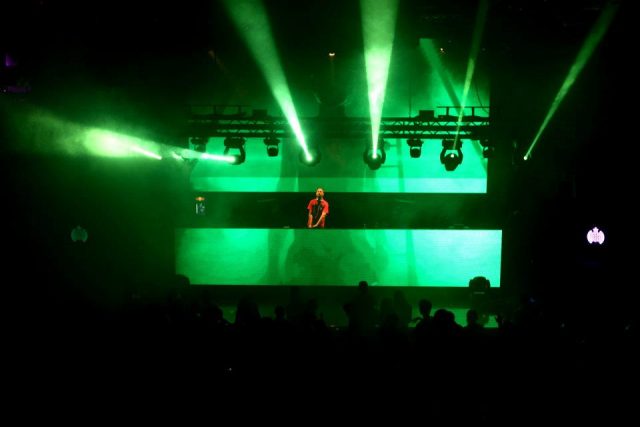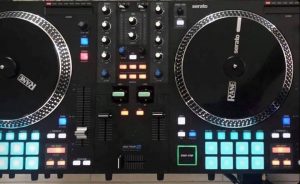
DJ Tech News – Feb 2021!
Things in DJ world are a little strange at the moment – with no real global club scene and no festivals at the moment, and big chunks of the world still in various levels of lockdown, things are just sort of ticking along in many corners. But there are still some very interesting things popping off and developing!
Not least the new tech which we talked about a little bit last month – the Rane One has been very warmly received in the first month, garnering great reviews. And the Pioneer DJM S7 is getting rave reviews, like this one in Digital DJ Tips. Because of the pandemic, I’ve not had chance to head to the Serato studio and get stuck into these new bits of kit yet – I can’t wait for the UK lockdown to relax so I can go and test them all out with DJ Blakey!
Speaking of Serato, they have launched a new competition – Serato Studio – BeatFighter ’Slam Dunk’ . Entrants must use Serato Studio, and the overall winner will take home the incredible sum of $20,000! 2nd prize is $4,000, 3rd $1000. Voting will take place as head-to-head battles on Serato’s Instagram, so if you are entering, be ready to mobilise your crew and get your vote count up!
Ableton have announced the release date for Ableton Live 11 – February 23rd. Beta users have been testing the product for several months now, but this will be the official release. Its one of the most popular pieces of music software for creating your own originals, remixes and edits, and fantastic for piecing together DJ mixes too – if you aren’t familiar with it, they allow a full 30 day trial. I’ve used it for years and have already committed to the upgrade. Highly recommended! You can save 20% on the upgrade price here.
Some big news for Rekordbox users – Pioneer announce this month that they now officially have compatibility with Big Sur. Big news if you like to DJ with them and use an Apple computer! At time of writing, Serato is still not compatible with Big Sur.
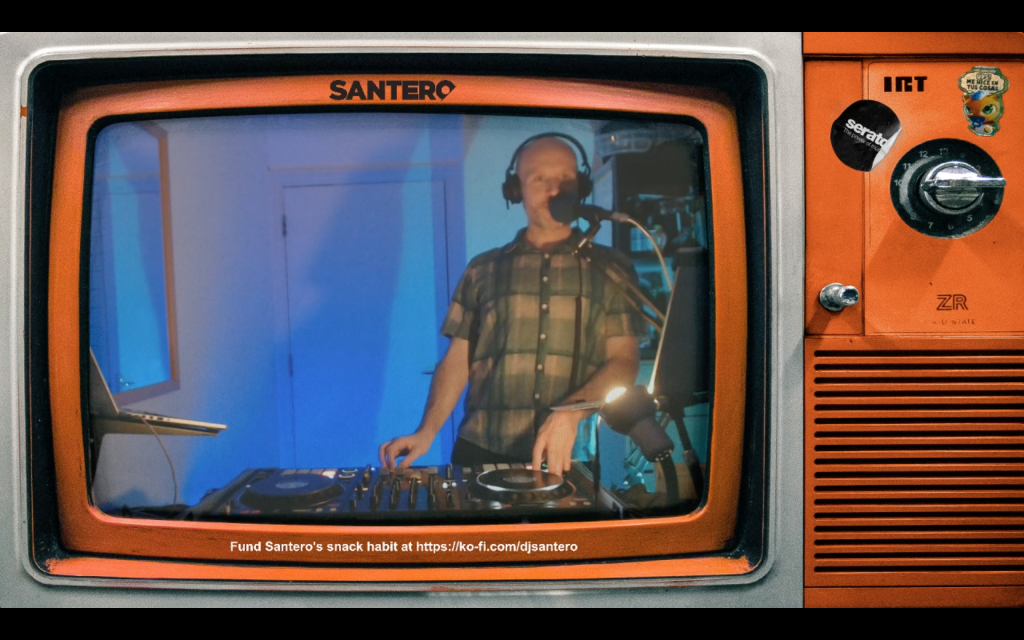
However, there is still plenty of good news from the Serato camp. For streamers, they have created a great set of visuals to use on live-streamed DJ sets (I’ve been using one of the retro TV set overlays on my streams, which people have really been into!). And they have also created a Twitch extension called Now Playing which, unsurprisingly, tells your audience what song is now playing! Very handy indeed.
For a little bit of fun – there’s a new “Guitar Hero” style game on the block, Fuser – check it out here. Its not exactly a close replica of the experience of being a DJ, but looks like it could be a good laugh for people wanting to mess around!
Thats all for this month – follow me over on Twitch and Instagram, go get the best music for your sets at the Heavy Hits Pool, and check out our Instagram, Facebook and Twitter!

One For The Lovers (and One For The Ex’s!)
A few years ago, I read something that stuck with me. Emynd, badass DJ/producer out of Philadelphia, made a comment along the lines of how his job as a DJ was to provide the soundtrack for people to hook up to. I can’t remember if it was a specific event or genre he meant, or whatever, but anyway… It has stayed with me ever since, because the truth of the matter is that a LOT of the people on any given dancefloor are looking for that special someone. If a lot of people are hooking up at the end of your sets, you are probably doing something right.
Things are obviously a little different right now – but that doesn’t mean we can’t set the tone for some domestic loving with all the couples that will be having valentines dates at home this year! And maybe we can even help a few flatmates fall in love!
As always, the Heavy Hits pool has your back – we’ve got this phenomenal Valentine’s Day Lovers playlist to get people all touchy-feely, and maybe even a bit smoochy. Timeless classics from yesteryear, modern slow-jams, and lottttttts of baby-makin’ music!
But of course, not everybody likes this time of year. And Heavy Hits appreciates that some DJs just like to zag when everyone else zigs. Maybe what you want in your mixes, what you want on your streams, is anti-Valentine’s music. Ask, and ye shall receive! A collection of classics about cheaters, breakups, gold diggers and betrayal – perfect if you want to go against the grain for Valentine’s this year! Check that playlist out here.
One of the best features of Heavy Hits is the brilliant curated playlists, with music to cater for any occasion – go check the rest of our amazing playlists out here, and make sure you have the advantage over the DJs out there who don’t have access to this awesome resource!
And make sure you check out our amazing Instagram page here and Facebook page here, and if you’re on Twitter give us a follow there too!

Translating Twitch
One of THE trends of the last year has been the explosion of DJs using Twitch, the livestreaming service. Largely used by gamers, DJs have adopted it as the next-best-thing while clubs are closed, and it has generated a whole new ecosystem. Recently, I watched Skratch Bastid tear it up on the Serato channel to over 8000 viewers! Whole communitites have sprung around particular DJs and their channels, and performers from around the world have linked up in order to create virtual concerts (usually via “raiding” – more on that in a minute!).
But it can be a bit intimidating to the newcomer. I myself am just starting out my own twitch channel, and trying to work things out, so here’s a few basics to help you – both as a viewer, and as a creator!
Chat
Pretty self-explanatory really – there’s a chat window that you can chat in, where you can tag other viewers or the performer, the performer can chat in there as well. Expect to see a LOT of emotes, often including channel-specific ones. One of the features that subscribing to different channels provides is opening up the emotes from them – that’s why you will often see emotes that you can’t post yourself! In popular channels the chat can move incredibly fast, and be hard to follow at times!
Often streamers will have a set of rules that flash up and have to be agreed on before you enter the chat for the first time – its generally pretty standard stuff, be polite, friendly, etc. Play nice, basically! I’ve found Twitch chats on DJ streams to be very positive, friendly places.
It is possible for streamers to set chat to follower-only, or even subscriber-only.
Emotes
You’ve heard of emojis, and emotes are simply the Twitch take on this. There’s a bunch of standard global emotes available, and then you get more when you subscribe to channels at different tiers. Streamers can create their own emotes once they become affiliates (which is unlocked by fulfilling a few relatively simple streaming requirements), and the better they are, the more likely people are to subscribe to your channel! More on this very shortly, here’s a screencap of DJ Volatile’s channel, you can see some of the emotes he created here in the chat. You can also see different badges that users have, before their names in the chat.
Emotes are not limited to the channel where you get them – if you subscribe to Volatile, you can then use his emotes in other chats around Twitch – so if you are making them, think about ways to make cool emotes which will be used elsewhere and might incentivise people to subscribe to you in order to have use of them as well.
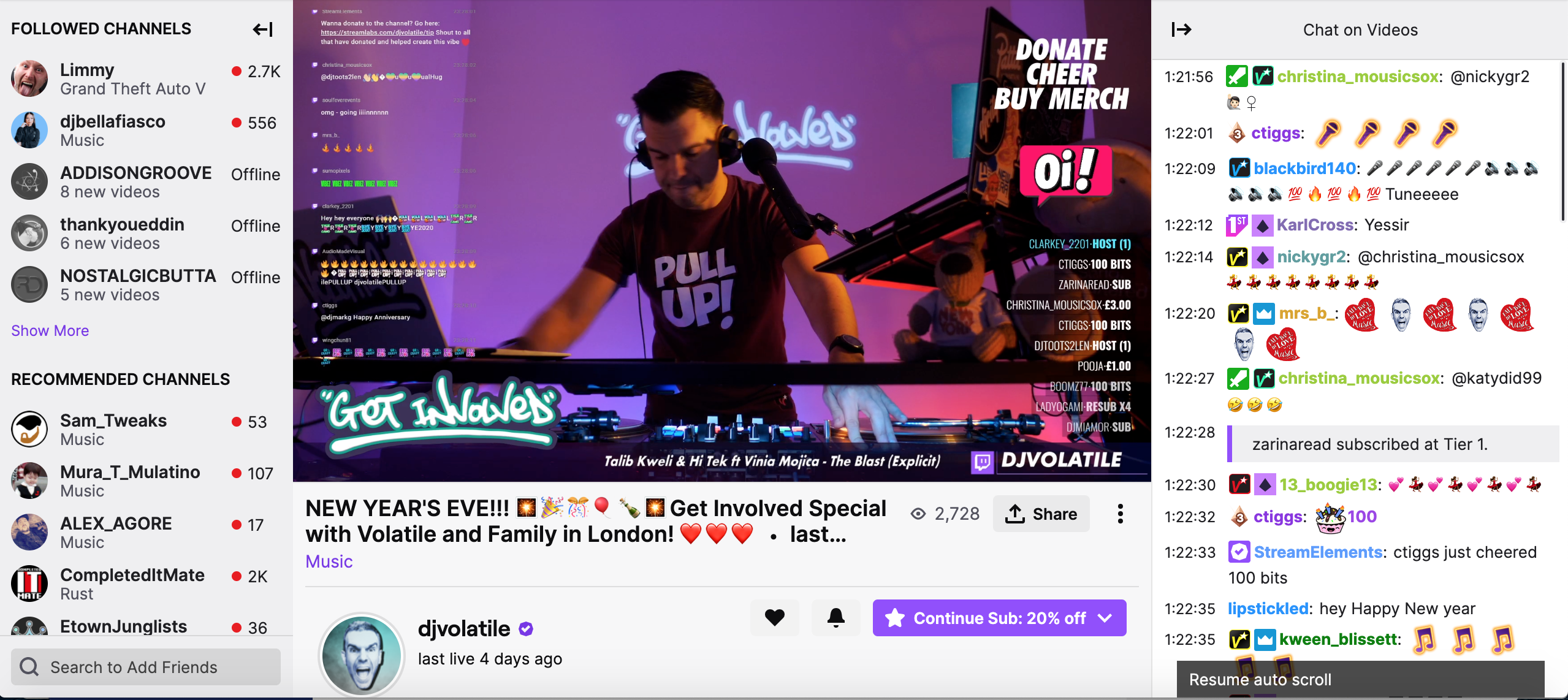
Badges
In the chat, names pop up, but also whatever relevant badges relate to the chat participant – follower, subscriber, how long you’ve subscribed, etc etc. Its a way of highlighting the most supportive and loyal fans in any given chat. More details here.
Follow
When you follow an account, it will add it to your follow list, and display that channel on the front page of your Twitch page when they are live. Its a good way to see when your favourite channels are active. It is completely free.
Notifications
If you click on the little notification bell on a channel you follow you toggle notifications on or off. You can set up notifications so that you get a message to your email inbox and so on – its quite customisable.
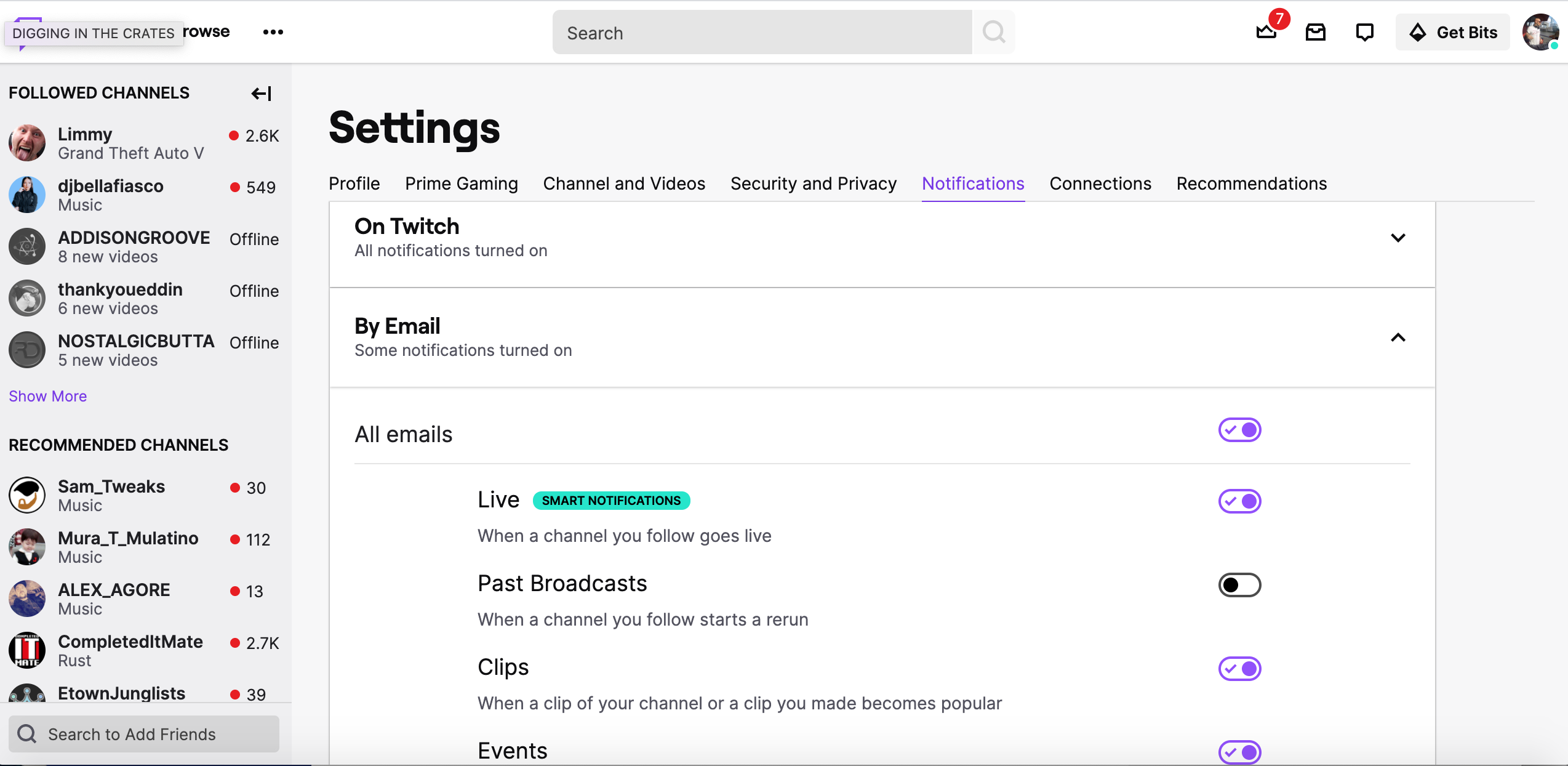
Subscriptions
Subscriptions are the next level on from following someone, and is essentially a monthly subscription to a channel. As I understand it – half the money goes to Twitch, half to the channel. This is a recurring monthly fee, and unlocks that channels emotes. People can buy them for themselves, and also you can gift them to other people if you want, or they can gift them to you. It also prevents you having to watch adverts each time you go to a new stream – if I hear that damn Tiesto advert another time, I might have to just subscribe to every channel on the entirety of Twitch…
It is worth noting that if you have Amazon Prime, you are entitled to one free Twitch subscription per month, as explained here.
Tiers
Tiers! UK readers will recoil in horror at that word, but in Twitch it just refers to the level of subscription you have. Almost everyone who subscribes goes for tier 1. Tier one costs $4.99, Tier 2 $9.99, Tier 3 $24.99. The most obvious difference you get access to even more emotes, and different badges for when involved in the chat, to show your loyalty to the channel. You also get emote modifier filters, which enable you to stand out further in the chat. Essentially, follows, subscriptions and tiers are all ways to support your favourite channels, and stand out a bit from other followers and subscribers if you really want to make your support known.
Channel Points
This is a points program for streamers to reward members of their community with perks, outlined in detail here. They are customsisable, and available to any affiliate or partner streamers. Essentially, its a loyalty system – it can be set up to reward watching, following, participating in raids, and so on. Speaking of which…
Raids
So, you may have heard about raids – they are one of the big selling points of Twitch as a platform. People set up “Raid Train” parties, and there’s even things like “Stream Raiders” as established events featuring DJs like DJ Yoda and Skratch Bastid.
Essentially, a raid is when the people watching a DJ are taken over into a new DJs stream. The initial DJ enters the command “/raid @nextDJname” into the chat, and Twitch does the rest. Its really fun, and a great way to direct your audience to other DJs you like and respect. And of course, others can come raid you and bring their crowds along as potential new fans!
Little bit of etiquette here – its generally not considered good form to outright ask people to raid your channel, unless it is someone you have the right relationship with, either personally or professionally. I’ve heard about people who’ve not texted a DJ in a year suddenly messaging “Hey, can you raid me after your set tonight?” out of the blue – NOT COOL! My personal rule is simply not to ask, and to raid people I think deserve it or who I’ve arranged it with as a reciprocal thing.
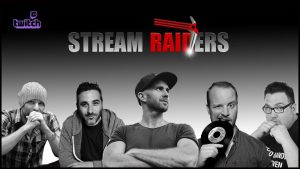
Bits
Bits are basically a Twitch currency – you buy them from Twitch at a fixed rate, and then can use them to “cheer” during broadcasts, and some of the money ends up with the streamer. Much like subscriptions, they function as a way of supporting a channel, of showing that support publicly, and differentiating you from other viewers. Streamers can set up visual and sound effects to be triggered when bits are spent – for instance, DJP has the Little Britain “bitty” sound clip set up to play whenever bits are given, which can extremely entertaining if timed right!
Hype Train
A hype train starts when a certain amount of paid activity happens in a 30 second window – subscriptions, cheers etc. Once it kicks off, a graphic comes up with a progress bar leading to the next level of the hype train. If more people subscribe or cheer etc within a specified window of time, the hype train grows. If not it tops out wherever it tops out. Generally speaking, once a hype train starts, viewers are far more likely to spend money on subs and so on.
Bots
This is something that you might be a bit cautious of, with social media “bots” often being assumed to be negative trouble-causers, but on Twitch the chat-bots are a brilliant labour-saving tool. You can instal a chat-bot, and then come up with simple commands which trigger the bot to say a pre-written comment. So, for instance, you could enter “!Twitter” and the chat-bot might automatically say “Go and follow DJ Funkybuns on Twitter, and be notified whenever he goes live on Twitch!”, or anything else you might want to say. Its up to you whether only you can trigger these command, or you + moderators, or anyone who wants to.
You can set certain commands to be on a timer, so that they are posted every 15 minutes or whatever. You can include a rule that they will only post if there’s been a certain amount of normal chat in between, so that the chat isn’t just your bot! I use Streamlabs chatbot for mine, but there are all sorts of options, and they all do very similar jobs.
As mentioned above, you can set up sound or visual FX to be triggered by certain things happening – follows, cheers, subs etc. How you approach this depends on the look and feel you want to go for, how much attention you want to draw to such things, etc. But when done well, it can really add to the experience, and certainly makes for a more fun time for all!
While writing this I was watching DJ Ray Domingo, and he seems to have it set up for the chat to be able to trigger emote explosions on-screen by using the command !boom, followed by the chosen emote!
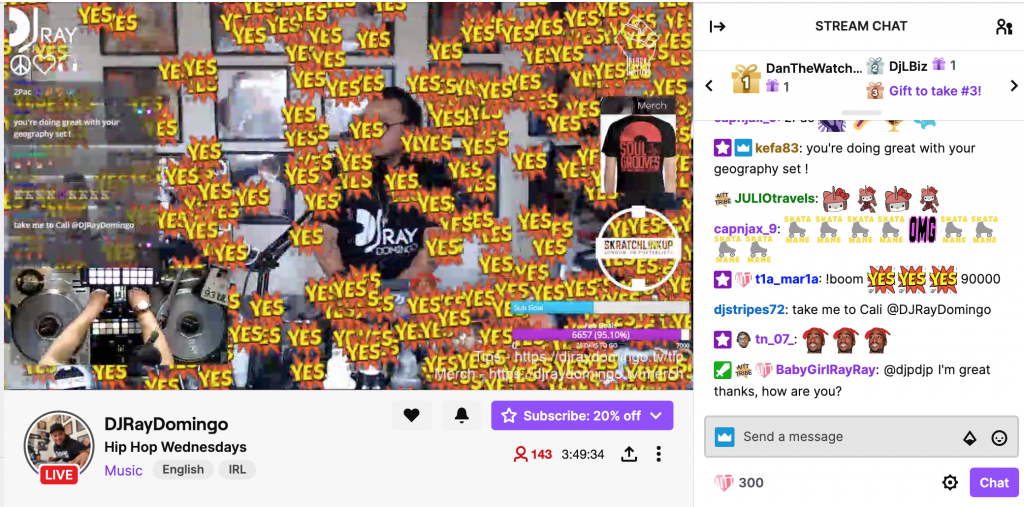
So, hopefully I’ve covered a decent amount of info for you and demystified a lot of what intimidates newcomers!
Its likely that I’ve missed some things from this round-up – what I would say is, don’t be afraid to ask questions! People are super friendly on Twitch, and usually streamers and other viewers are happy to explain things. Volatile even takes the time every Thursday to stop his stream and explain exactly how it all works. As I learn more, I may write another post explaining the things I pick up along the way!
While you are getting your Twitch channel ready, or bouncing from stream to stream as a viewer, go pick up the best music at the Heavy Hits pool, and go follow my twitch here!
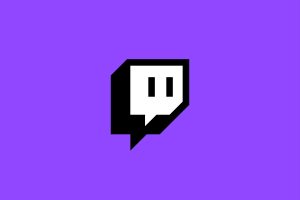
When Will We Be Partying Again?
One of the hardest things of the pandemic has been the difficulty of planning. Back in March 2020, nobody really knew how long we would have to close clubs and festivals and event spaces. In the summer, certain parts of the world started reopening, then the 2nd wave came through and much of that came grinding to a halt. Across much of North America and Europe, the things you can do as a DJ are highly limited. I don’t like to think about the amount of gigs I had booked in at various points that have been cancelled across the last year! Quite apart from the financial hit, it is psychologically very hard to take the repeated disappointments and upended plans.
We enviously look on at places like New Zealand, and wonder when it will be our turn to run big concerts and festivals again.
Well – things are looking up. First things first, the incredible achievement of creating multiple vaccines this quickly means that we can say with confidence that herd immunity is an achievable goal in the forseeable future. The USA’s Dr Anthony Fauci spoke last week at a conference held by the Association of Performing Arts Professionals, and said that live entertainment’s return depended on vaccination rollout and getting between 70% to 85% of the population vaccinated. “If everything goes right, this is will occur some time in the fall of 2021, so that by the time we get to the early to mid-fall, you can have people feeling safe performing onstage as well as people in the audience.”
He went on to say that mask-wearing and good ventilation may be required for some time after the return of events, and given everything we have been through, you can understand why people may urge caution, even after a population is vaccinated. Another possibility is that attendees will have to present a negative Covid test to gain entry. But he was bullish overall – “We’ll be back in the theaters — performers will be performing, audiences will be enjoying it. It will happen.”
Millions are already vaccinated across the USA and UK, with the EU gradually rolling out their vaccines too. Priority is naturally going to higher risk citizens – but it is very exciting to see the numbers of vaccinated climb rapidly. At the moment the UK is vaccinating 140 people per minute, and hope to increase that pace. The sooner people have the jabs, the sooner our lives can get back to normal.
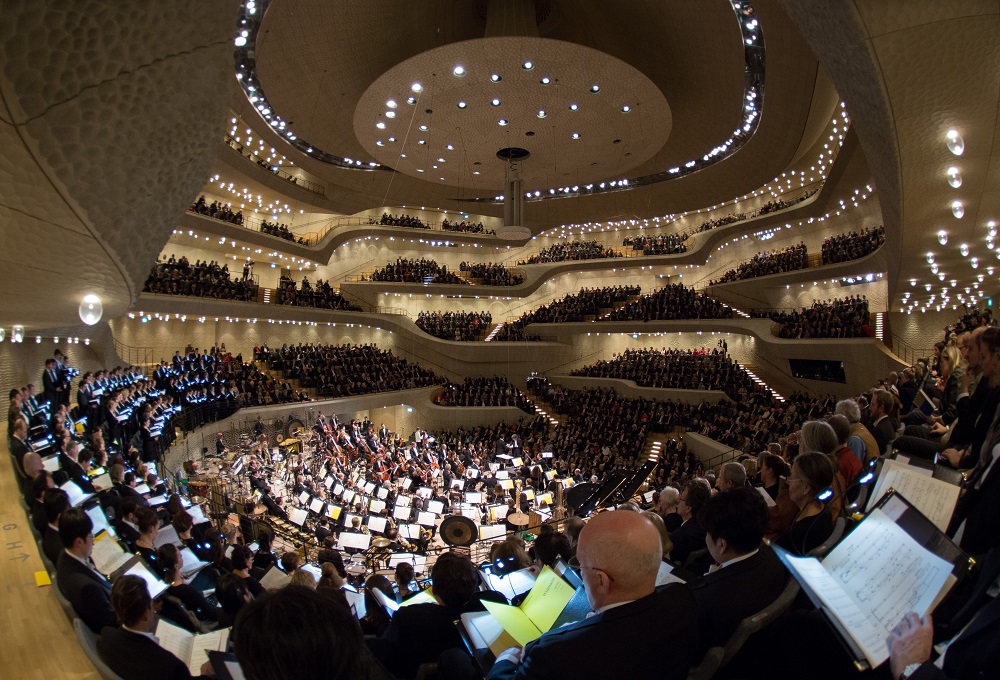
Related to this, there have been German studies which appear to show that the risk of Covid infection in concert venues is actually not that great, if appropriate measures are in place. As reported here, the Fraunhofer Heinrich Hertz Institute conducted research on venues. “Concert halls and theatres are not places of infection,” Dr Raphael von Hoensbroech, director of Konzerthaus Dortmund, concluded. “The past few months have shown that politics needs a scientifically sound basis for decision-making. With our study, we want to ensure that concert halls and theatres may again admit sufficient audiences when they reopen.”
It should be noted that clubs and theatres/concert halls are quite different beasts, but it is encouraging nonetheless – if any ways exist to put on events, that can only be good news for our industry.
As we’ve seen with the very creation of the vaccines, things can move a lot faster than expected when there is enough economic and social motivation.
If 2020 has taught us anything, it is that nothing is promised – but I wouldn’t be completely shocked if things start to come back a bit earlier than Fauci is saying, even if on a reduced scale – humans are a social animal, and people need to socialise and let off steam. Reduced capacity, socially-distanced events could even be happening by Spring/Summer – who knows?
Its so important to have light at the end of the tunnel, to feel like positive progress is being made, and to have things to look forward to. And finally we have this! I’m going to ramp up my livestreaming and Mixcloud use with an eye on hopefully picking up bookings later in the year…
In the meantime, make sure you stay on top of musical trends and ready for action by downloading the best tracks at the Heavy Hits pool, and go follow me at Instagram!

DJ Tech News – Jan 2021!
Well, its that time of year where we are normally getting ready for industry trade show NAMM, but of course, this year things are a bit different. Because of the ongoing pandemic, the actual in-person event has been cancelled – however, a virtual NAMM “Believe In Music” event is taking place, so there are still things to get excited about! The event kicks off on January 18th, and you can sign up here. The full schedule can be viewed here.
Around this time, we normally start getting intriguing leaks of DJ kit that will be launched soon, and some very, very interesting things have popped up online in the last week.
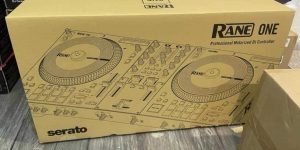
First up – pictures recently leaked of a new 2-channel all-in-one Rane controller, featuring motorised platters, apparently called the Rane One. This is a very interesting development, as Rane’s Twelve controllers have become a firm favourite of many DJs, and this seems to bring that technology to a more affordable level.
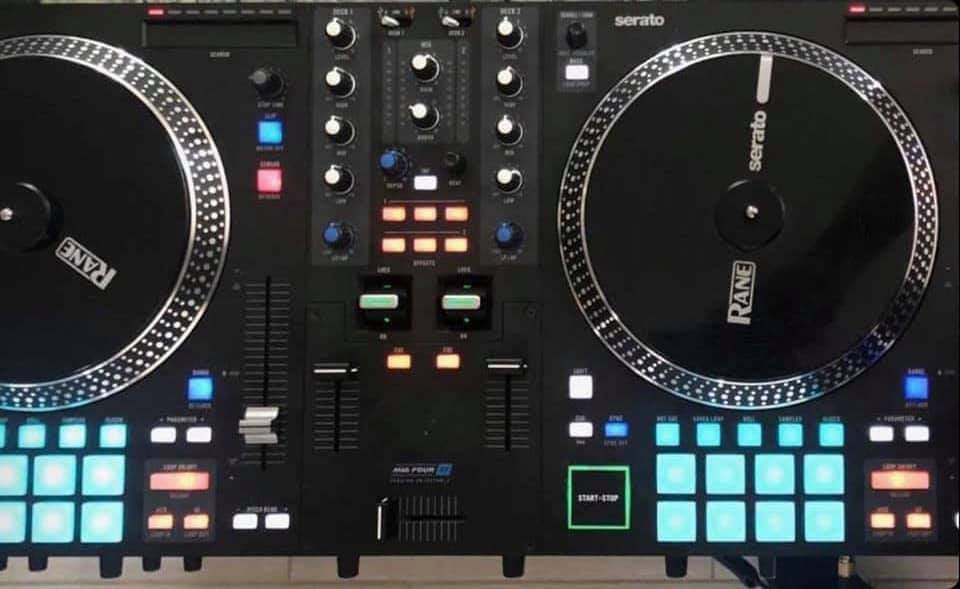
The platters looks to be roughly 7″, which is very decent for this size of controller. It looks like they have a Mag Four X3 label above the crossfader, which bodes very well for that aspect. The look is very much like a pared down Rane mixer, and they appear to have FX paddles too – always a welcome feature!
The company is renowned for high quality hardware and great sound quality – I can’t wait to have a go on one of these. For a full in-depth review by DJ Soo, head over to DJ Tech Tools.
Elsewhere, a less substantiated story, but one worth remarking on nonetheless. A photo of what seems to be a new Pioneer scratch mixer has leaked, and speculation is that it plugs the gap between the old S9 and the new S11 – it was odd that they simply skipped S10, and this would help explain why! This mixer seems to be a more affordable version of the S11 – still legit, but not quite as feature-packed.
Thats all for now, but I’m sure there will be plenty more things announced of the coming month, so check back for more in February! In the meantime, head to the Heavy Hits pool, and follow me over on Instagram!
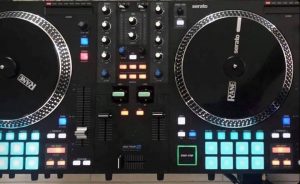
Best of 2020!
New year’s are always a big chance to look forward to the fresh year ahead, to make plans, resolve to improve, all that stuff – but its also important to reflect on the year just gone, and as DJs it is a good idea to have a look back at the big tracks of the year. Its also a GREAT opportunity to pick up gems you missed out on, or grab the top tracks from genres you don’t specialise in but want to be ready for if the need arises.
So, we at Heavy Hits pool have got your backs – we’ve put together 6 “Best of 2020” playlists across our main genre categories of Hip Hop/R&B, Electronic/Dance, Pop/Top 40, Latin, Reggae/Dancehall, and International.
For obvious reasons, this was an unusual year for music. Most clubs in the world were closed for most of the year. Almost no festivals took place. But DJing was still happening all over, largely thanks to the emergence of live-streaming as a popular medium.
Despite this, the #1 Hip Hop track was a straight up club banger – WAP. This tune is basically a cultural phenomenon at this point, launching a million memes, remixes and parodies. The influence of TikTok is all over the placing of Toosie Slide at #2 – that one really felt like Drake seeing if he could turn social media dances to his advantage! There’s no real surprises in this chart – Pop Smoke, Megan Thee Stallion, Roddy Ricch
In Electronic/Dance, the leading download is Roses (Imanbek Remix) by SAINt JHN, which has big ever since it came out – and again, the influence of TikTok can’t be ignored here. Like it or not, if a song goes viral on there, it makes a big difference. Fortunately, this song is a banger! Meduza & GOODBOYS reunite with Lose Control, this time joining forces with Becky Hill – a worthy follow up to Piece Of Your Heart! And in #3 is Joel Corry with Head & Heart, which of course was the focus of the competition we ran last year – check out the winners here!
Pop/Top 40 has a lot of familiar names at the top spots – Justin Bieber at #1, The Weeknd at #3, but sneaking in at #2 is comeback kid Scott Storch with his latin hit Fuego Del Calor – great to see him back in the mix, he’s one seriously talented producer. Special mention here to the track in #7 – DJ AndOne’s brilliant edit of Bee Gees and Bruno Mars, a genuine hands-in-the-air party rocker!
The most-downloaded Latin song of 2020 was Tusa, by Karol G & Nicki Minaj. Most unexpected sample of the year has to the Spongebob infused Agua by Tainy & J Balvin… did not expect that when I first listened, will have to take a place in my crates next to the Elephant Man classic! As with the other charts, lots of familiar names – Daddy Yankee, Bad Bunny, 6IX9INE and others feature prominently.
Reggae/Dancehall’s top spots are a mix of new, in the form of Buju Banton’s Trust Remix, and then some stone cold classics, such as Beenie Man – King Of The Dancehall, and Sean Paul – Temperature.
The International chart is dominated by Afrobeats, with Burna Boy taking the top 2 spots, and 4 of the top 10! I’m a big fan of Aya Nakamura, and she appears with Jolie Nana (DJ Mighty Club Edit).
Go check out the full charts, and all the latest hits, at the Heavy Hits pool!
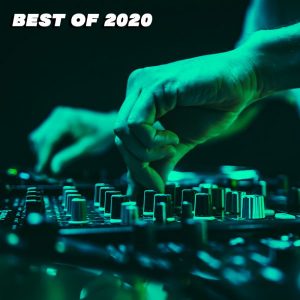
New Year’s Resolutions!
Its that time of the year! Where we look back at the year just gone, make plans for the new year ahead – and where we commit to resolutions, to improve ourselves and our lives one way or another. Its a great opportunity to try to start good habits or end bad ones, so here’s some suggestions for resolutions that DJs may find useful, or might spark ideas for other resolutions that suit you better!
Explore Music
You could make a commitment to listen to more new music – and that doesn’t mean it has to be music that came out recently. You could go through classic Essential Mixes, a treasure trove of brilliant music by some of the best DJs around. You could pick a top albums list from say Pitchfork or Rolling Stone or Source, and listen to each album, day by day, then move on to a different list at the end. You could use the Spotify algorithms to your advantage, as I explain in this article (along with a bunch of other strategies, such as checking out radio playlists).
One of the greatest things about being a music lover is that every day is the best day in music – there are new tunes coming out every day, PLUS you still have the entire history of music to explore! Trust me, if you search, you will find bangers!
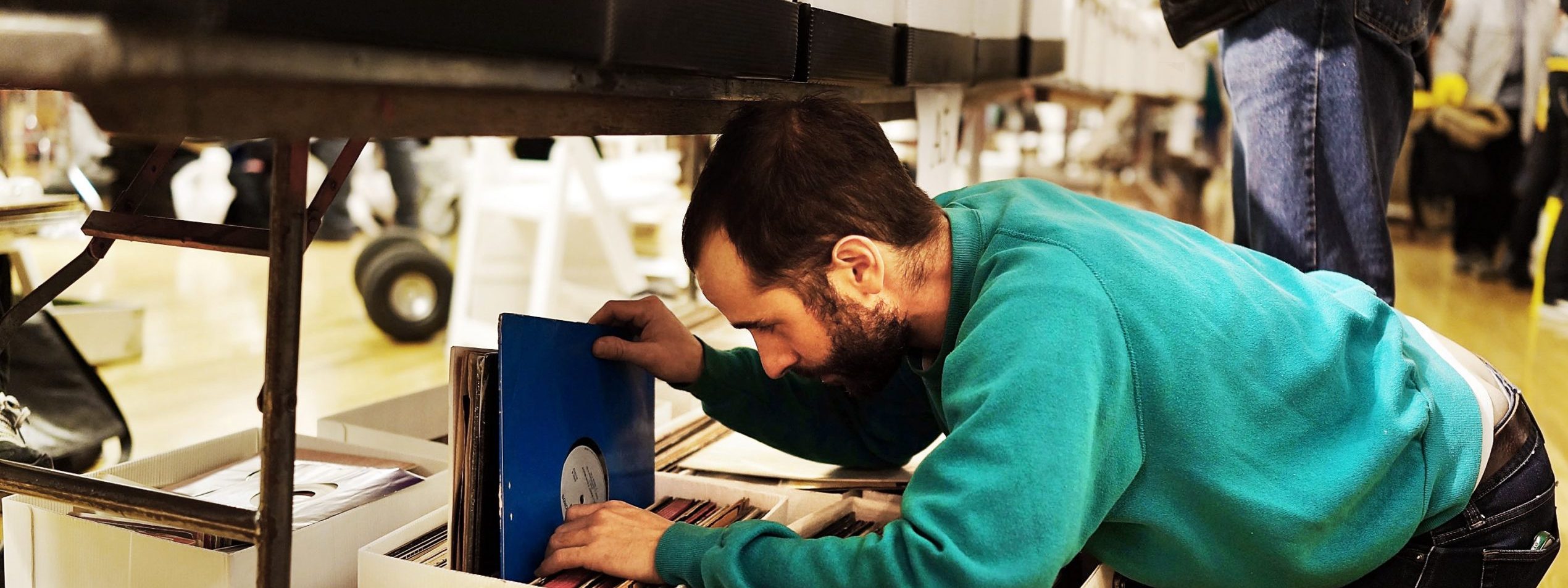
Practice Yo Cuts!
2020 has been a year where being nice on the cut has been a HUGE advantage, because of the emergence of video livestreaming as one of the major ways for DJs to connect with their audiences. Obviously, not everyone is going to be able to reach 3style champion levels of technical expertise, but being tight is a benefit to any DJ. And with the fact that eyes are very much on your while on-screen, it adds a valuable visual element to your sets if you are able to cut, scratch and juggle a bit, and can help you differentiate your mixes from other DJs’.
There are loads of great free scratch tutorials on Youtube, and loads of paid-for services from badass scratch DJs like DJ Angelo. Even just 10 minutes a day scratch practice will make a big difference if you stick to it consistently.
Develop Your Online Image
Like it or not, your image matters. And these days, your image is largely represented online, much of that through your social media channels. From conversations I’ve had with industry people, the first place any booker looks when checking out a DJ is their Instagram. Facebook and Twitter are worth maintaining if you have them, and having your own website doesn’t hurt either. But if you want to maximise the chances of making a good impression, think about how your Instagram looks, think about the image you want to present to the world.
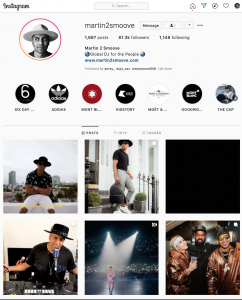
There is no “correct” way to do this. But there are ways that are more or less effective, depending on what you want to achieve. Posting consistently (both in terms of timing and in terms of what content you share), engaging with fans who comment, commenting on the posts of others to become part of a wider community – all these things can help. You’d be surprised at how little research some bookers do – they want to go look at a page and check someone is legit, and so if they have to wade through several dozen unrelated posts to get to anything that shows you at work, they might conclude that you are not a serious DJ. That doesn’t mean you have to do things a specific way – my Instagram has plenty of pizza photos and duck videos – but do so in full knowledge of the impression you want to create, the relationship you want to generate with followers.
Look at the social media of DJs you admire and want to emulate – see what lessons you can learn from what they post and how they post it.
Develop Your Studio Skills
One of the realities of the modern DJ game is that it is a HUGE advantage to be putting out your own tracks – be that originals, remixes, edits, mashups, whatever! A huge aspect of getting booked is name recognition – you will struggle to make your name known in Sydney if you live in New York from your DJing alone, but have a remix of yours become popular and suddenly DJs all over the world will know your name, and DJs around the world are often the people throwing parties and shaping the musical tastes of those around them.
Another benefit of this is that you can make exclusive edits for yourself, meaning your sets can be more unique, and the better you get at making music, the more you will understand the musical dynamics of building a good DJ set. The two skills are not necessary for each other, but they sure do help the other along!
Go check out DJ AndOne’s amazing Youtube channel, where we walks through how he makes his amazing edits and remixes!
Learn Music Theory
Serial badman DJ Freefall suggests learning more about the technical side of music, and even if you aren’t making music this isn’t a bad idea – understanding the language of music just gives you a far more rounded understanding of what works and why, so that you can take even greater control of your audience when DJing.
Tidy Up Your Library
It is the eternal struggle of the digital DJ – thousands of tracks, and trying to organise them in a way that makes sense, which allows easy access to what you need, stops you falling into repetitive ruts, and most importantly keeps you inspired and creative.
We had an in-depth conversation with DJ Freefall about this very subject here – I’ve commenced this mission, and it has helped me rediscover all sorts of things I’d forgotten about, and make musical connections I never would have before. And it is the new year’s resolution that keeps on giving – when you have as much music as I do, this job is never complete!
Clean Up Your Library!
One thing I have realised in the age of livestreaming is that a lot of the music I play in clubs is FILTHY. Tracks I never batted an eyelid about playing to 18+ crowds take on a whole new dimension when you are playing online, to crowds that include people’s kids! I have done a fair few corporate performances, via their social media channels, or private Zoom parties to company staff. And it is a horrible feeling to realise that you only have the dirty versions of tracks you want to play. Its an even more horrible feeling to play a track you didn’t realise was dirty and suddenly you are swearing to the CEO’s cute little daughter on Zoom!
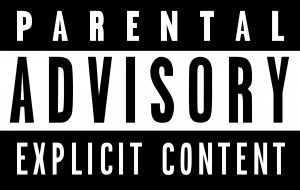
The easiest way for a lot of these is to head to the Heavy Hits Pool and pick up the clean versions of as many of these tracks as you can – these are all carefully and accurately labeled. If you can’t find clean versions, then making them isn’t too hard – the simplest way is to open the tracks in a program like Ableton Live, highlight a swear word, and reverse that section of the track. If you just do the word (rather than a whole sentence or phrase) then the brief section of backwards audio sounds fine. Once you’ve done it a few times, you’ll find the knack for doing it well!
Make Notes When You DJ
Maybe not “notes” exactly, but @tecksound2 on Twitter made a great suggestion – comment, tag and star tracks for later on, so you don’t forget about an amazing track, or a great sample you found, or a cool lyric to do a wordplay with! I have a version of this I have done for a while – when I’m playing a gig, if I do a particularly great mix, I take a quick screenshot, and then I can refer back to it at a later date. I’ve used these ideas as the basis of quite a few mashups and edits, and its handy for when making a mix and wanting some quick ideas of blends that worked really well for me in a live setting.
Turn Your Practice Sessions Into Social Media Content
DJ Sam Flanagan made a great suggestion, which I may actually copy – film scratch practice every day, and then edit this into a weekly highlights package. He’s also planning to to make 1 scratch routine per day that will feed into his practice, and theming them weekly (eg, Beastie Boys one week, De La Soul the next) – another great idea!
This ticks so many boxes for DJs who scratch – you get to practice your skills, you deep dive a different artist each week (meaning you’ll probably discover new tunes, or old ones you forgot about!), it creates relevant content for social media, and then when gigs come along, you have a whole treasure chest of routines to pepper your sets with!
Most of all, have fun!
If you’re doing it right, you DJ because its fun to you – its so important to keep that flame alive! New year’s resolutions are very useful, but never let them get in the way of your love of music, the joy of entertaining people, the thrill of trying something out that you’re not sure of, and it just works. I’ll likely try to take on a few of the above resolutions, and hopefully most of them will stick – if not, no worries!
2020 has been an incredibly tough year for the DJ community, and it will probably be a little while before 2021 approaches whatever “normal” looks like these days. But we’ve made it through this far, and if we’re smart we can get back to the clubs as better DJs, and make sure we are ready to capitalise on the parties that will be coming! A lot of DJs won’t be ready – make sure you are! Stay on top of the latest releases, keep your skills honed, let people know you are still doing the damn thing!
From everyone here at Heavy Hits, we wish you a happy New Year, and hope that only good things come your way in the year ahead!
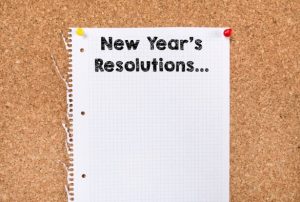
DJ Tech News – Dec 2020!
Well, we’ve nearly made it through 2020. That was… not great. We can only hope that 2021 will be a better year for everyone!
But I’m back here for our periodic examination of what is going on in the world of DJ tech – so let’s dive right in and see what’s new!
Air DJing?!
I was casually scrolling through my feed when I stumbled across this DJ Yoda video, and my mind was BLOWN.
View this post on Instagram
There’s a lot to take on board here. First of all – how? Well, it seems that the iPad takes a 3D view of your hand, maps that to the software, and hey presto, you are virtually scratching the virtual decks, with no contact. If you look to the top-middle on the iPad, there appears to be shadowy “hands” in a control panel, to show you what the iPad is receiving. Pretty clever stuff.
The CEO of Algoriddim, Karim Morsy, said “The ability to mix music using djay Pro AI’s intelligent, built-in hand tracking technology represents a fundamental change in how DJs are able to orchestrate mixes and adds a new visual dimension to live DJ sets. Gesture Control is a new paradigm with implications beyond DJing and music creation. It is a major step forward with how people interact with mobile technology.”
This is one of those moments where you get a sense you are glimpsing a whole new corner of technology, which could have amazing stage performance possibilities. I am a Serato user, and dabble in Rekordbox – but it is fascinating to see how the smaller DJ apps are coming up with so many incredible ideas (such as this one that we covered earlier in the year), some of which Serato have expressly said they will not be adopting. Could someone like Algoriddim come in and steal a big chunk of market share? I’m sure they will hope so!
Reloop Buddy
At the risk of this seeming like an advert for Algoriddim’s djay, Reloop have announced this fun little controller for using with their software, due for release at the end of December (£199 / $279 / €219). Its only a tiny thing, with a docking station for iPads, but looks to have all the features you would need to get going – decent sized jog wheels, 16 pads (8 per channel), controlling all manner of useful functions. And the unit has controls to easily access their incredible “Neural Mix” feature – essentially allowing you to instantly isolate drums, instruments or vocals on tracks. At the price, it looks a very handy piece of kit for people who don’t just want to be touching iPad screens the whole time.
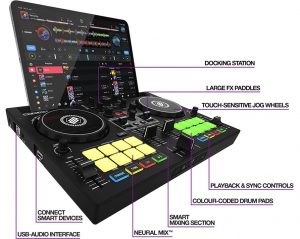
Serato Scratch Banks
The new Pioneer S11 scratch mixers included a brilliant new feature – scratch banks. A recent update to Serato means that you now have access to Serato’s scratch banks across the Rane Seventy, Seventy Two and Seventy Two Mk2 mixers. This is covered in more detail over here.
Pioneer DDJ-FLX6
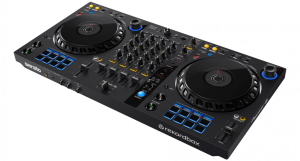
This was announce earlier this winter, and the DDJ-FLX6 got a strangely hostile reception in the places I looked at, seemingly because it has a somewhat different visual aesthetic to the other Pioneer controllers. Designed for use with both Rekordbox and Serato, and has 4 channels. It has some pretty interesting sounding features – merge FX look fun, and then it has a series of scratch patterns to apply, cutting the sound in and out – all you have to do is move the platter back and forth! This is exactly the sort of thing that annoys purists, like sync on steroids basically! C’est la vie – this is how technology moves forward! To me, this looks like a really competitive unit – in the UK it is priced at £539. I’m looking forward to having a play on one to see how it compares to the DDJ1000srt and XDJ-XZ.
Ableton 11
Its now really more a studio tool than a performance tool, but its still a very popular app for the DJ community, and Ableton Live is about to hit v11. Its due for release in early 2021, and includes some improvements aimed squarely at live performance. Check out this video for more info
For me, though, the ultimate piece of DJ technology is probably the cheapest you’re going to find this Christmas – its this vinyl-style pizza cutter – I’ve always been a big fan of cutting up 12″s as often as possible!
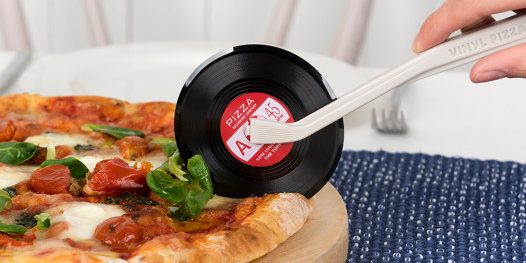
This will be the last blog post before Christmas, so everybody – have a very merry Christmas! And, as always, head over to the Heavy Hits Pool for the best new music!
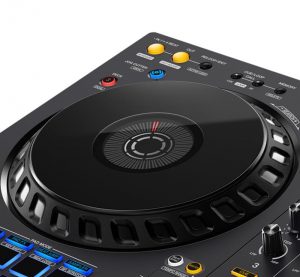
Patrick Hagenaar
Today we feature an in-depth interview with a stalwart of the dance music scene, Patrick Hagenaar! He’s had some career so far!
First up, can you tell our readers a bit about how long you’ve been in the music industry, and how you first got involved, and what you do these days?
In 1999, when I was 17 years old, I moved from the Netherlands to London to study business at London Guildhall University. The first thing I did was buy my equipment with the money I made with my summer job.
I managed to get my first residency at a local pub in East London after DJing for 6 months. I also managed to bag a weekend job at a record shop close to Spitalfields market (which is now a fancy hair salon) and worked for the student radio station. So from early on I was trying to do whatever I could to get my foot in the industry. As I was so young and had no real knowledge of the club scene, but was adamant that I was going to play in a big club, I decided to send my mixtape to 200 bars and clubs I found in the Time Out and used the office of the student radio station to call them every week to see if they had listened to my tape and whether they would book me.
These people must have thought I was crazy, but I was surprised how quite a few people were willing to actually listen! Eventually, I got my first break through when Gavin at Turnmills let me play to 800 Japanese students in the main room on a Thursday night! I ended up becoming a rep for Turnmills and flyering at my halls of residence for them. In 2000, my mixtape was featured in IDJ magazine in the bedroom DJ section, which I was ecstatic about, only to realise they messed up my mobile number, so got nothing out of it!

As part of my degree, I was suppose to do work experience for 12 months at my company of choice. The music industry was the only way to go for me, so after some advice from my best friend, I put my suit on, took a load of CVs and went to both major and independent labels to hand in my CV in person, hoping that people would take notice. I remember some labels not even opening the door to me, but I still pushed my CV under the door anyway. Eventually I managed to get a placement at BMG in the club promotions department after being picked out of 200 applicants. It was both the best and the worst year for me, I made some great friends, but my boss was an absolute bully and everyone there just turned a blind eye – for example I was taken to HR, because I was talking to the DJ’s too long…? It made me realise what a toxic environment a major label was at that time, and I decided I would never work for a major label again.
Whilst at BMG, I managed to get my first residency at a major club in London, which at that time was my ultimate goal. Every Wednesday night I’d play at Heaven, which was amazing. I think I was the only non-gay guy who played there, which often frustrated a lot of clients haha! Thursdays at work were often a struggle to stay awake after 2 hours of sleep, and I remember nodding off a couple of times and my head hitting the computer screen. As I have never drunk or taken drugs, I never had to worry about hangovers, so my actual job didn’t get affected by it.
At BMG I used to sneak off to a separate building everyday where one of the small imprints (Obsessive Records) were located, who did really cool stuff (like an Ian Pooley compilation), so was really intrigued. Through one of the guys there I got introduced to his girlfriend who was working in events at Ministry of Sound at the time. She gave me the opportunity to do a 1 day a week work experience through my final year at uni. This led to a full-time job eventually and I worked in the mobile/digital department for 5 years.
One of the funniest highlights was that in 2008, we managed to get Basshunter with his xmas record ‘Jingle Bells’ into the Top 15 in the UK charts purely on mobile downloads. This forced the label to actual get cd singles made – everyone hated us for it haha!
In the meantime I started playing more in the London scene at The Egg, Pacha, The Cross etc. Even though Ministry of Sound didn’t like their staff being DJs, I managed to get a trial for their sub brand Housexy, which was supposed to compete against Hed Kandi (which MoS eventually bought) and started touring for them, whilst getting international requests myself as well.
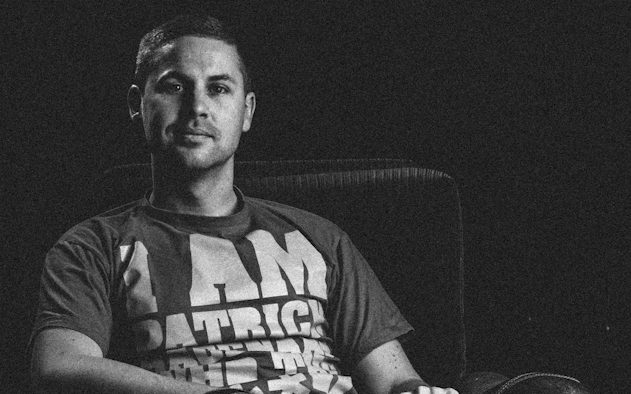
At 2009, I left MoS to work for a digital marketing agency, but was still DJ-ing a lot abroad as myself, but also as Hagenaar & Albrecht with my friend Alistair as we had quite some success with our releases together. Back in 2007, Alistair ran a night at Pacha London and after hassling him for months, he let me play at his night and that is how our friendship/ partnership started.
By 2010, it became increasingly difficult to combine a full-time job, whilst DJing internationally. I remember flying on friday night, straight after work, to Singapore, do a gig, land back at 6am at Heathrow on Monday morning and arrive at my desk at 8.30 am. I decided to sack my day job and give myself 12 months to build a sustainable career.
After 3 months I got an email from MoS tours, who had been keeping an eye on what I had been doing as a DJ and producer and asked if I was interested to do some gigs here and there. Eventually this led to a tours and club residency for 4 years. In the meantime my productions were getting released on major labels and started to do official remixes for Kylie Minogue, HAIM, Route 94, Rudimental, A-Trak etc.
By 2015, due to changes internally with management at Ministry of Sound tours, my residency was coming to an end. At that stage I was still doing quite some gigs and productions, remixes etc, but I felt that I wasn’t making enough of an impact anymore even though my productions were played by the biggest DJs out there and on national radio. I remember meeting the old booker from MoS, who I considered a good friend and he suggested it was time to maybe switch things up as my brand was perhaps a bit tired and done. That was initially a hard thing to swallow as when you use your own name as the brand, it’s personal. But then I asked myself ‘If I stop tomorrow, would anyone care?’ And the answer was ‘no’…
So I decided to use my knowledge and experience and start a new project from scratch and keep it under wraps. This was initially hard, as you try to open doors again. Even though you might have the contacts, they don’t know who you are. I often see people trying this and eventually give up and tell the world they are behind the project, which completely defeats the object when you try to build hype. The industry is always about the next big thing/hype and I thought if my productions are good enough, they will eventually cut through. Something that I wanted to do different this time was actually getting a team around me as I always used to do everything myself, which limited me to a certain degree; there was not enough time in the day to make music, find gigs, sort deals etc.
It took some time to get the project going and find the right manager, but within a year I started to make waves, getting played by tastemakers, getting national radio support, starting to remix artists like Dua Lipa. It was only at the end of 2017 when I had my first release on Axtone that I decided to actually show my face in press pictures etc as I felt that by that point that if people would find out who I was that I had already earnt some stripes to gain the respect. For me it was really important that people wouldn’t look at it like ‘Oh look, here is Patrick again trying to stay afloat’.
To this day Im still going strong with the project; managed to accumulate over 100m Spotify streams, have remixed the likes of Ed Sheeran, Clean Bandit, Kygo etc and played twice at Tomorrowland, so can’t complain! Although I’m still not shouting about the name…
Besides this I hooked up again with Alistair a couple of years ago to start a DJ promo company called Whoa! Promo. For years we have been discussing this and felt the time was right to launch it. With both our extensive knowledge on both sides of the industry and database we built up over the years, we felt there was a gap in the market to really offer value for money to clients and focus on real results by putting the DJ’s first. In the last 12 month, despite covid, we have been going from strength to strength, so 2021 is looking promising!
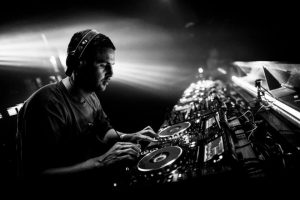
The music industry has changed an incredible amount in the last few decades – what are some important aspects of a modern music career that maybe weren’t a factor when you started?
Wow, I feel like an old man haha!
When I started DJing, I had to teach myself – there were no guidebooks, videos, YouTube etc. You were known for your skills as a DJ, and you didn’t have to be a producer. It took me years to even consider getting in production – it was around 2007 that this really started to get important. Even though I had dabbled with DAWs for a long time, I never considered it a real option. I learnt production by learning from pro’s – ie go in the studio with a basic idea and then learnt from what engineers did. I’m sure I used to annoy the hell out of them as I would constantly ask questions, trying to get my vision across to make sure it would get where it needed to be. Again there were no tutorials out there and it wasn’t super accessible.
When I started DJing, everyone played with vinyl. I didn’t as I couldn’t afford it, and played on CDs instead. In 1999/2000 people would put their nose up if they knew and most clubs obviously didn’t have them, so I had to ask promoters in a sly way what equipment there was and end up bringing my own very often with the knowledge that as long as I delivered, no one could complain. I ended up winning a major DJ competition in Holland whilst mixing on CDs.
Music is endlessly accessible now. You are not limited to what is in stock or the record shop is willing to sell to you. Unfortunately there is no filter anymore, so its tricky to find all the good stuff as there is not enough time in the day to listen to everything.
The attention span of your audience as a DJ is so different now. I used to just play what I thought would work well in a club, and the crowd would just be receptive and open to new music. This is more tricky to find now, unless you play at proper underground events.
Social media is king now, which is a good and a bad thing. Great to interact with fans and find out what is going and and build a following around the world. But you have to play the game and branding is everything now, music is sadly not enough.
As the barrier to entry is so much lower now, its an open playing field, which I think is a great thing. No matter where you are from, your music can be heard and if you have a laptop, you can make music! All information is readily available online and you can learn whatever you want! This is also reflected in the artists that are breaking through now – far more diverse and from all over the world.
Back in the day this was very different. In the same way you often hear people say ‘check the DJ top 100 from 1997 – that was a true reflection of the biggest DJs in the world’. What people forget is that DJ mag was mainly sold in UK, so it only really represented what the UK was into. So it wasn’t actually representing the world in any way, plus people abroad had to physically post their top 5 in!
Now the scene has become more mainstream and people can vote around the world, but again with everything being online, things can be manipulated easier as you often see with social numbers. But then again this has always happened in some way in the music industry – in the same way that labels used to buy their singles up in the record shop in order to chart higher. Its just happening in a different way now.
Ultimately the competition is so much more fierce now – you are essentially competing against artists from around the world for the attention span of the listener, which seems to get shorter and shorter, with so many distractions around online.
Anyway, it’s always good to have a challenge, right? And I still believe the old saying of ‘the cream always rises to the top’.
How do you balance your time as a producer, as a DJ, and then with other projects? Do you deliberately apportion X amount of hours per week/month to each, or is it something that changes depending on circumstances?
I don’t tend to play as much anymore as I used to, so my time is generally divided between Whoa! Promo and producing. In theory its split 50/50, but it fluctuates depending on how busy Whoa! Promo is and whether I have remix deadlines for instance. I tend to work a lot of evenings to keep both moving forward. There is never really enough time in the day. Its all about investing time to keep growing.
You’ve worked with some huge venues, labels and artists under your various aliases – how have you found dealing with those kinds of things? The music industry has a reputation for exploiting people with unfair contracts and so on – did you have professional help (lawyers/management etc), and what advice would you give people experiencing this for the first time?
Oh yeah, the industry has a bad rep and rightly so to be honest. Some people do try to pull a fast one left, right and centre and always throw it on ‘Do it for the exposure’ or just don’t pay you afterwards etc. I think its impossible to find anyone who hasn’t been screwed over at some point, but you live and learn. If I would have got a pound for every time I’ve been told ‘Well this is how the industry works!’ I would have been rich haha. A lot of stuff is deemed acceptable in this industry, that in any other industry would be totally unacceptable.
The dance music industry historically has always had a low barrier to entry and therefore attracted enough “Del Boys” or people from the underworld. Anyone can start a club night or run a label. All you need is capital, no qualifications needed.
I think, depending on the contract, get advice, even from friends. If its a serious long-term contract, get a lawyer – they know exactly what is fair and what is not. Labels, for example, often give you a standard contract with shitty terms, that you should never accept. If you don’t know what you are looking for, you will get fucked over. It is important for yourself to know what is worth a fight and what isn’t.
Also with one-off gigs – money speaks louder than a contract. I.e. get paid beforehand. If you have a gig abroad and you suppose to get paid afterwards, but you don’t. What are you really going to do about it?

When you are travelling as a DJ, how do you go about deciding what to play? And what are you hoping for from the local DJs you work with?
First and foremost I do research. Where do I play? How big is the venue? What do they normally play music wise? Who has played there recently? What does the promoter expect?
All this info will give me a rough idea and on the back of that I make a shortlist of tracks to potentially play. In addition I have lists with genres of house music that I can fall back on.
Sometimes it goes completely different than you anticipate, so you got to be prepped. I always make sure I arrive at the venue an hour before I play to get an idea of the vibe is and what to potentially play. Its harder and harder to find great warm up DJs, something I’ve always enjoyed doing btw, as it often feels that DJs dont always appreciate their role as part of the overall night, and seems to be more about making their own set count. I guess I’m old school like that.
Ideal warm up DJs sets the mood for the night: doesn’t play hits or my tunes, and finishes in a way where I can pick up with my sound. I hate stopping and starting and intros. I’m a DJ and play a set, I’m not a ‘DJ artist’ giving a DJ concert or something lol
PS I remember at Ministry of Sound many times when a headline act just rocks up, couldn’t give a shit what had been played so far, plays his/her/their intro and plays the same set for an hour. Then the next DJ was somehow delayed and they would freak out as their set was exactly 1 hour and couldn’t extend it for 10 mins, so then one of the residents had to jump on the decks to fill the gap – what a fucking embarrassment! Also once a famous DJ didn’t want to play at 3am, because he was spending time with his kids the next day…? Why are you a DJ then haha! It’s kind of part of the job, playing late, no?
Did your sets differ when representing a brand like Ministry of Sound, vs being booked solely on your own name? If so, how and why?
Not much to be honest, if I would adapt for a more commercial set, it would still have to be music I would stand for. It had to fit within my sound as I still am a DJ in my own right.
I remember one promoter once commented on all the Housexy residents back in the day as the Spice Girls lol, he said: you all represent the brand musically, but give it your own touch. That balance is key I guess.
Do you think its a good idea for DJs to try and work behind the scenes as well as in the DJ booth and studio?
Oh yeah, if you are serious about being part of it, you need to get experience on both sides to get a good understanding and become an all rounder. For example, I have too often seen people make stupid business decisions, because they decide to be the artist and stick their head in the sand when it comes to contracts etc. It’s a business at the end of the day when you like to or not. Otherwise just do it as a hobby and then you don’t have to worry too much!
How has the 2020 lockdowns experience impacted your work, and the music you make and release? What do you expect in 2021 and beyond?
Obviously no gigs. Spotify streams definitely have gone down and as with no clubs open, there hasn’t been as many remix requests, even though my remixes are played a lot on specialist radio and podcasts, but I think a lot of labels have been putting their budget elsewhere instead, which is totally understandable. Production wise, I have just been carrying on as normal, although not been able to do many writing sessions with songwriters this year. Done a couple through zoom, but just doesn’t work in the same way. With Whoa! Promo we had our busiest year as we very much focused on podcasts, live streams and specialist radio, which is where we have been able to make a real impact.
2021 will take some time to get going I reckon, I personally have no expectations gig wise.
Music wise, I’m just focused on making bigger and better songs with the hope one will break through, which is always a bit of a lottery!
For Whoa! Promo we aim to make it our biggest year yet and keep growing our database in new areas to offer even better value for our clients. Its all about being proactive.
Whats the one piece of advice you would give a new DJ starting out today?
Just have fun with it and do it because you love music. There is nothing more fun than sharing your passion for music with others and make them dance!
The moment its not about the music anymore, that is where it starts to go wrong.
Ps: be serious about what you do, but DON’T take yourself serious, you are just someone playing records at the end of the day; nothing more nothing less.
Check out Patrick at his Soundcloud, and DJs/labels – make sure to check out Whoa! Promo!
Go get the best new tunes at the Heavy Hits pool, and follow me over on Instagram!

Serato DJ or RekordBox DJ – Which is best in 2020?
For today’s post, we have a special guest column, generously shared with us by DJ Tech Reviews – be sure to bookmark that site for more of this sort of content! But without further ado… Serato DJ or RekordBox DJ – which is best in 2020?
Ah, the age-old question – Serato DJ or RekordBox DJ – Which Should I Use? Let’s face it, one of the toughest parts of succeeding as a DJ is deciding which platform to use.
When you are trying to deliver an epic performance, you need software that helps out with things like collecting and organizing your sounds. Tools like Serato DJ and Rekordbox DJ are ideal for that exact purpose.
The only problem? There are plenty of reviews out there from pros ranting about the benefits of one platform or the other. However, it’s tough to find comparisons that help you choose one tool over another.
That’s why I’m here to help.
I’ve explored all the ins and outs of both the Rekordbox and Serato platforms to bring you this head-to-head guide.
Let’s dive into Serato DJ or Rekordbox DJ – Which Should I Use?
An Intro to Serato DJ or RekordBox DJ
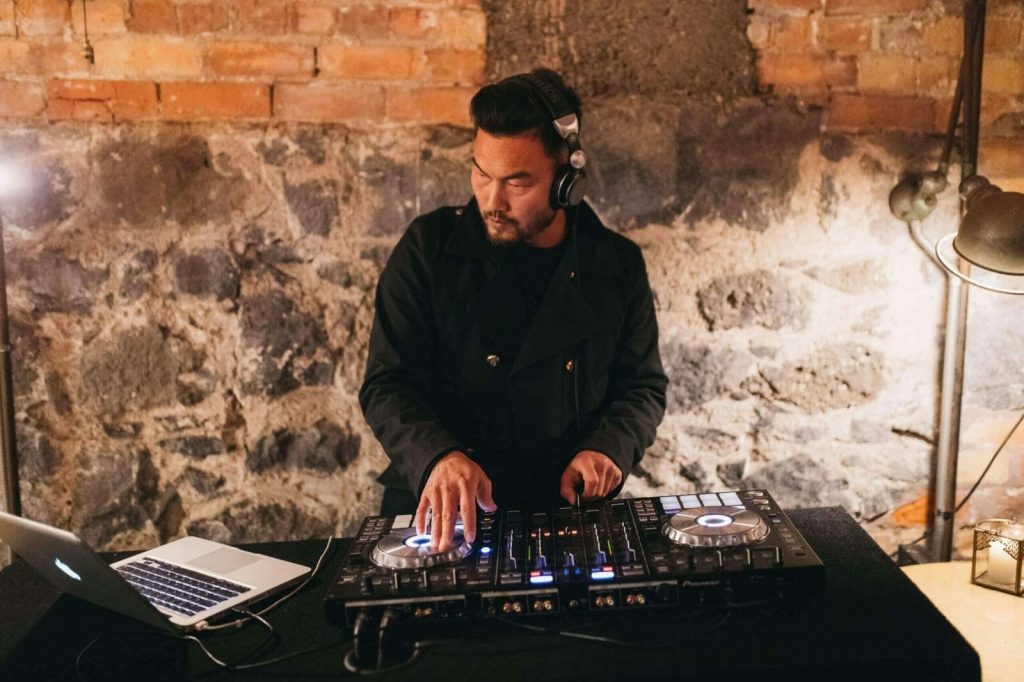
Both Serato and RekordBox DJ are considered reliable and practical options for the modern DJ. They’re teetering on the cutting edge of the industry, delivering high-quality tech for many respected artists.
Serato first launched in the mid-2000s, and it’s evolved with the DJ landscape since, offering access to everything from turntables, to DJ controllers and media players.
Rekordbox is the software from Pioneer DJ, originally designed to help DJs organize and export tracks to USB drives. RekordBox DJ also comes with a performance mode that allows you to spin via your laptop and a DJ controller. It’s pretty similar in functionality and style to Serato.
At first glance, you’d probably struggle to tell the difference between the two.
Both Serato and RekordBox allow you to organize your music collection, save cue points, tweak FX elements, and display tracks with visual waveforms. Both options are stable (though one is better than the other here), and they both get regular updates from developers.
So, what really sets these tools apart?
Serato DJ or RekordBox DJ: Features
Let’s take a look at the features available from these two platforms.
Serato’s built-in feature set is pretty awesome on its own. However, there’s also a bunch of expansion packs available too. For instance, you can access Serato Video to access an in-built video editor, adding synced sets to your system in minutes.
Check out this video walkthrough to get you started:
Serato Flip means that you can remix your tracks quickly and easily for playback, while Serato DVS allows you to connect CDJs and turntables with timecode discs and vinyl. You can also try Serato FX for FX customization, Serato Pitch and Time for shifting pitches, and more.
If you want to learn more about Serato DVS then check out this video:
The experience of working with RekordBox is very similar to using Serato. However, RekordBox is compatible with fewer controllers, you can only like 22 controllers, 12 mixers, and 10 CDJs.
Check out this video walkthrough to get you started:
Within the RekordBox software, you’ll find a sampler, FX tools, edit and remixing tools, and more, all comparable to Serato Flip. You also get a version of Pitch and Time, which helps with transitioning between tracks.
Rekordbox also offers many expansion packs similar to Serato, such as RekordBox DVS, with timecode control for scratches and timecode vinyl setup. There’s also RekordBox Video, for visual effects, and RMX effects. RekordBox arguably gives you more for your money out of the box, but Serato DJ is a little more expandable. In my opinion, Serato DJ is excellent if you’re looking to mix exclusively on laptops and controllers. However, if you’re looking for a more old-school style with Pioneer CDJs, then RekordBox is going to be your go-to choice. It’s excellent as prep software for CDJ playlists.
Serato DJ or RekordBox DJ: Hardware
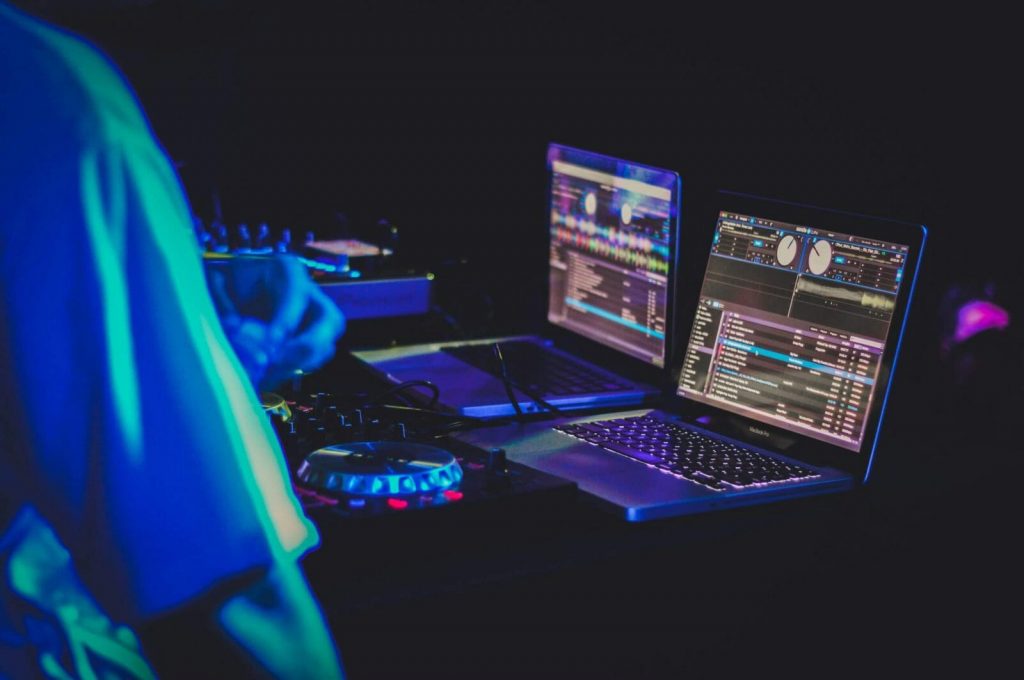
Serato is probably one of the broadest DJ software solutions on the market today. Pretty much any controller that isn’t manufactured by Native Instruments or Pioneer uses Serato. This means you’ve got a lot of choices. Serato integrates with 53 controllers, 16 mixers, and four different interfaces. There’s also integration available with up to 14 accessories, such as FX controllers.
The difference between Serato and RekordBox is a bit like the difference between an Apple or PC. One keeps you firmly within its own ecosystem, whereas the other is more flexible.
RekordBox is pretty much your only option if you’re going to be mixing on Pioneer CDJs. RekordBox is an extension of Pioneer’s free music prep software, offering laptop-based control. Since Pioneers are titans of hardware in the DJ industry, RekordBox is going to appeal to a lot of pros.
RekordBox has the dominance here for CDJ mixing, but its flexibility is pretty limited.
Serato DJ or RekordBox DJ: User Interface
Serato DJ’s interface is very similar in style to RekordBox DJ. Compared to options like Traktor, the interface is a lot darker and more serious in style.
Serato’s interface is packed full of information, with in-line vertical waveform displays and plenty of features to explore. It does take a while to find your way around the software, but you’ll figure it out eventually. I’d recommend giving yourself at least a few hours to experiment.
One of the best features of Serato is the browser. The Smart Crates system allows you to find the tracks you’ve improvised for your set instantly.
Alternatively, RekordBox also looks ultra-professional, with a very sleek and minimalist appearance. The side-by-side track view is a nice extra touch.
A great thing about the RekordBox interface is that you can still use it when you’re not connected to a deck or controller. This means that you can try different combos of tunes at any time, even if you’re just hanging out on the catch.
Although both interfaces are pretty impressive from an objective standpoint, RekordBox is just a lot nicer in my opinion it is just a lot cleaner, and you can use it without a controller.
Serato DJ or RekordBox DJ: Stability
Stability is always going to be crucial for DJs. You don’t have to worry about things like gigs stopping in their tracks or destroyed libraries in your software when you have stability. Years of patching and tweaking have made most modern software pretty stable.
Serato is very stable, and it works well on a range of older machines. For instance, you can even use it with a MacBook Pro 2011. If you haven’t upgraded your laptop in a while (like me), then you should do fine with Serato.
On the other hand, RekordBox is built on the Pioneer framework, which hasn’t always been known for its stability. This system wasn’t designed for live use, and it showed. However, the interface is a lot better today with much more reliability.
In my opinion, the Serato DJ is just a touch more reliable overall.
Serato DJ or RekordBox DJ: Pricing
We all have budgets, right?
Serato DJ full license comes free if you buy an expensive controller. However, you can buy Serato Intro and upgrade to Serato DJ at $129. Expansion packs cost anywhere from $29 to $99.
If you want the DJ Essentials Club Kit package, you can buy that for $169, and the Serato DJ software will come with it.
RekordBox is free to use itself. This is the prep software for loading your tunes onto a USB drive without a laptop. RekordBox DJ, on the other hand, costs $139. Expansion packs can range from $10 for additional FX to up to $159 for video.
The Pioneer brand bundle RekordBox DJ in for free with every Pioneer controller, however, even the cheapest ones on the market.


